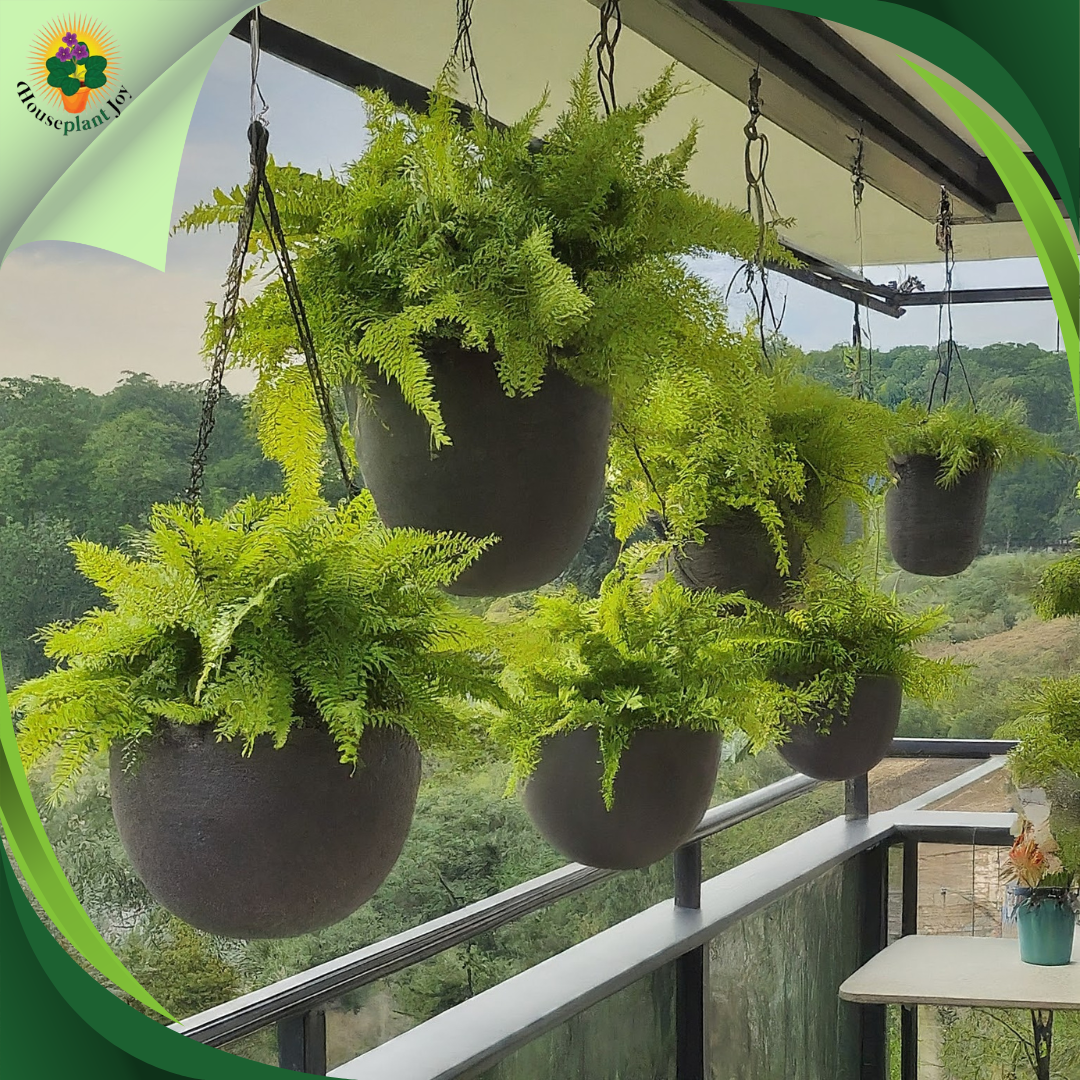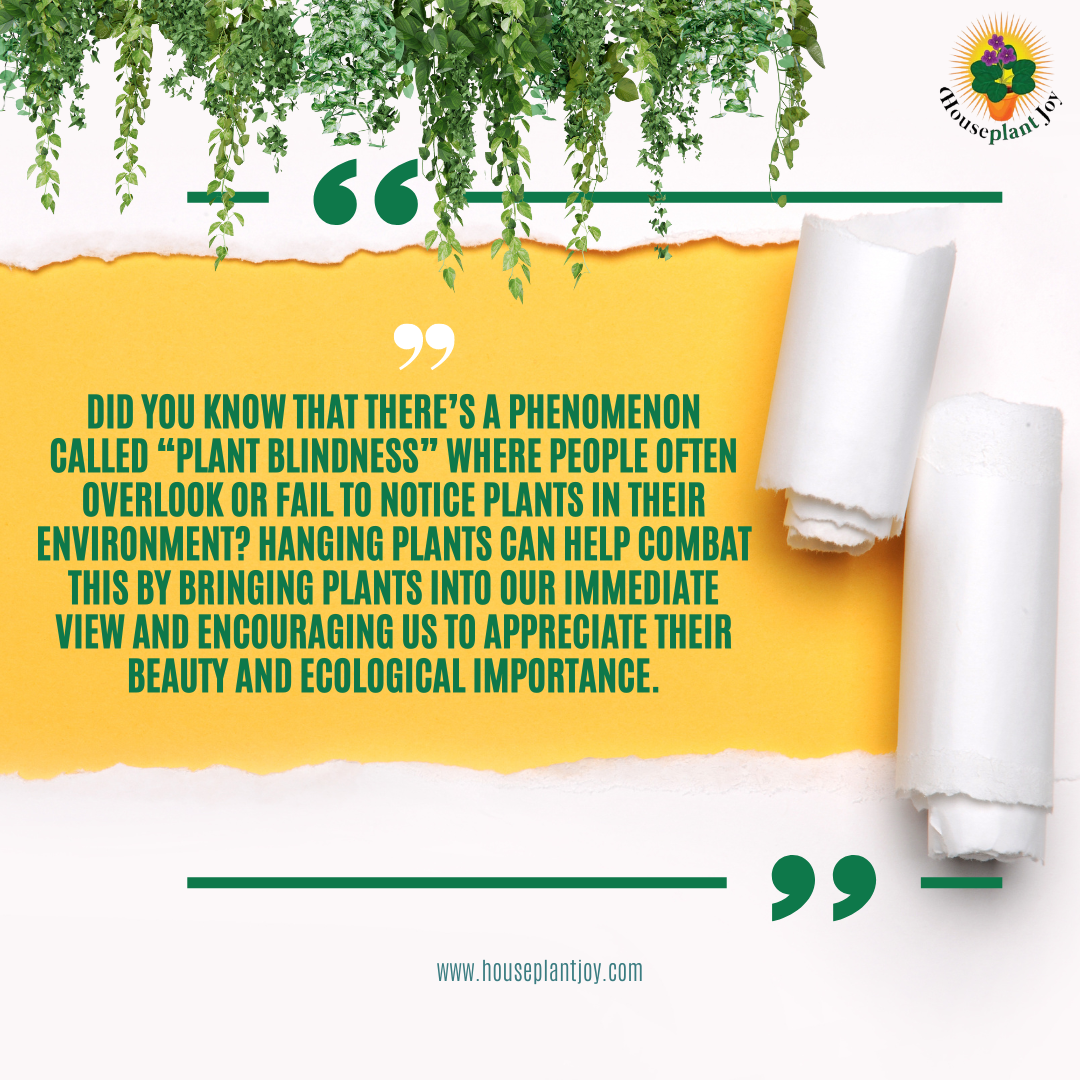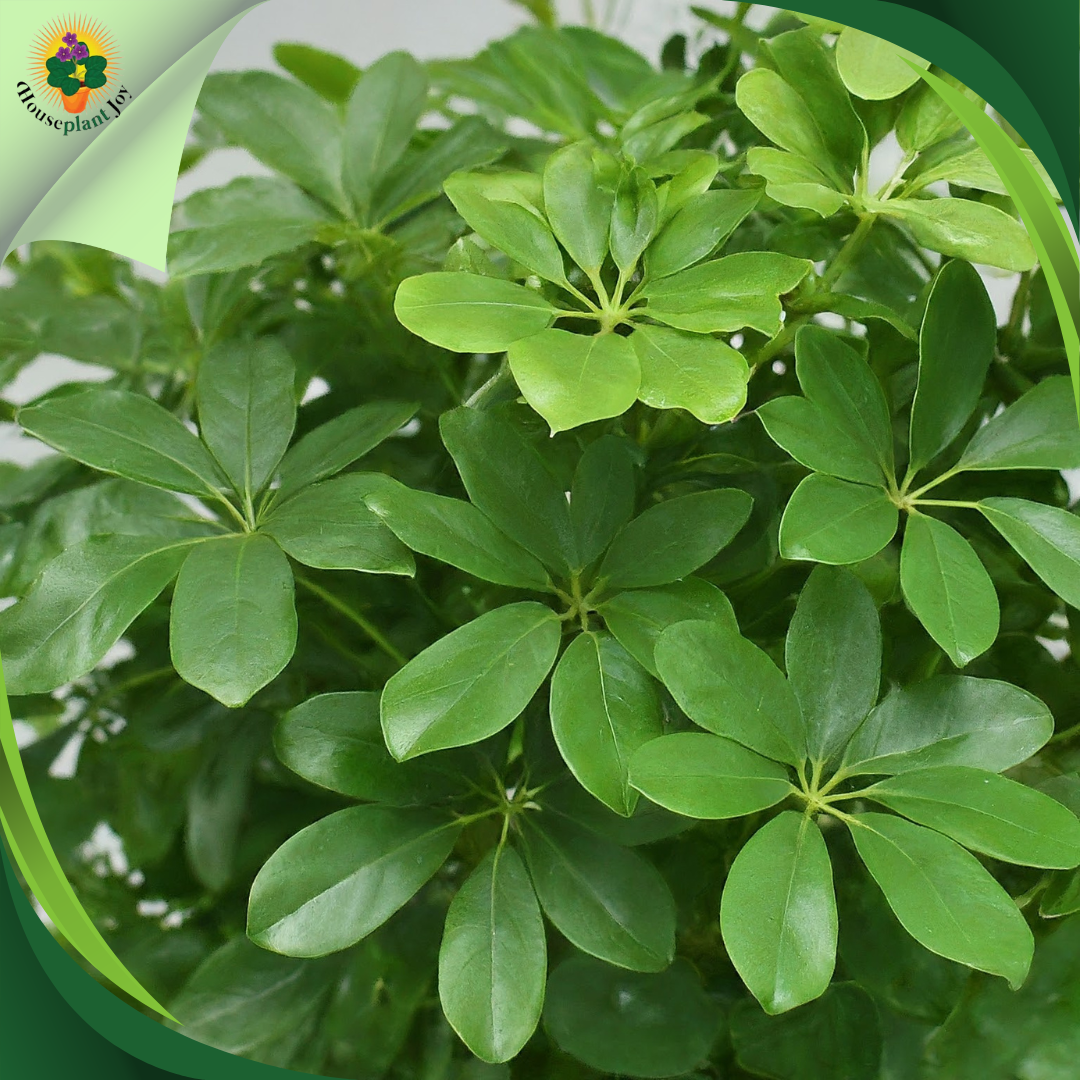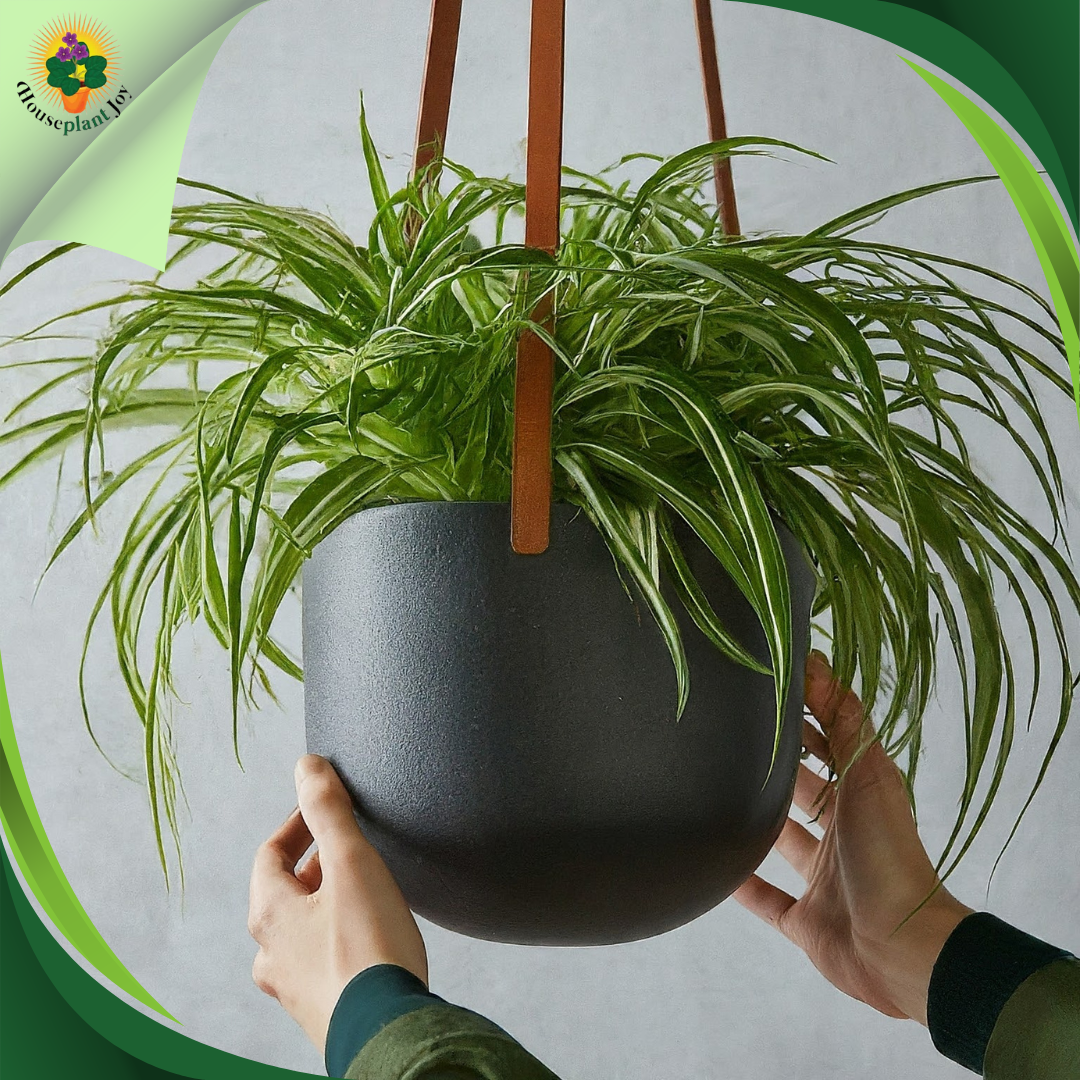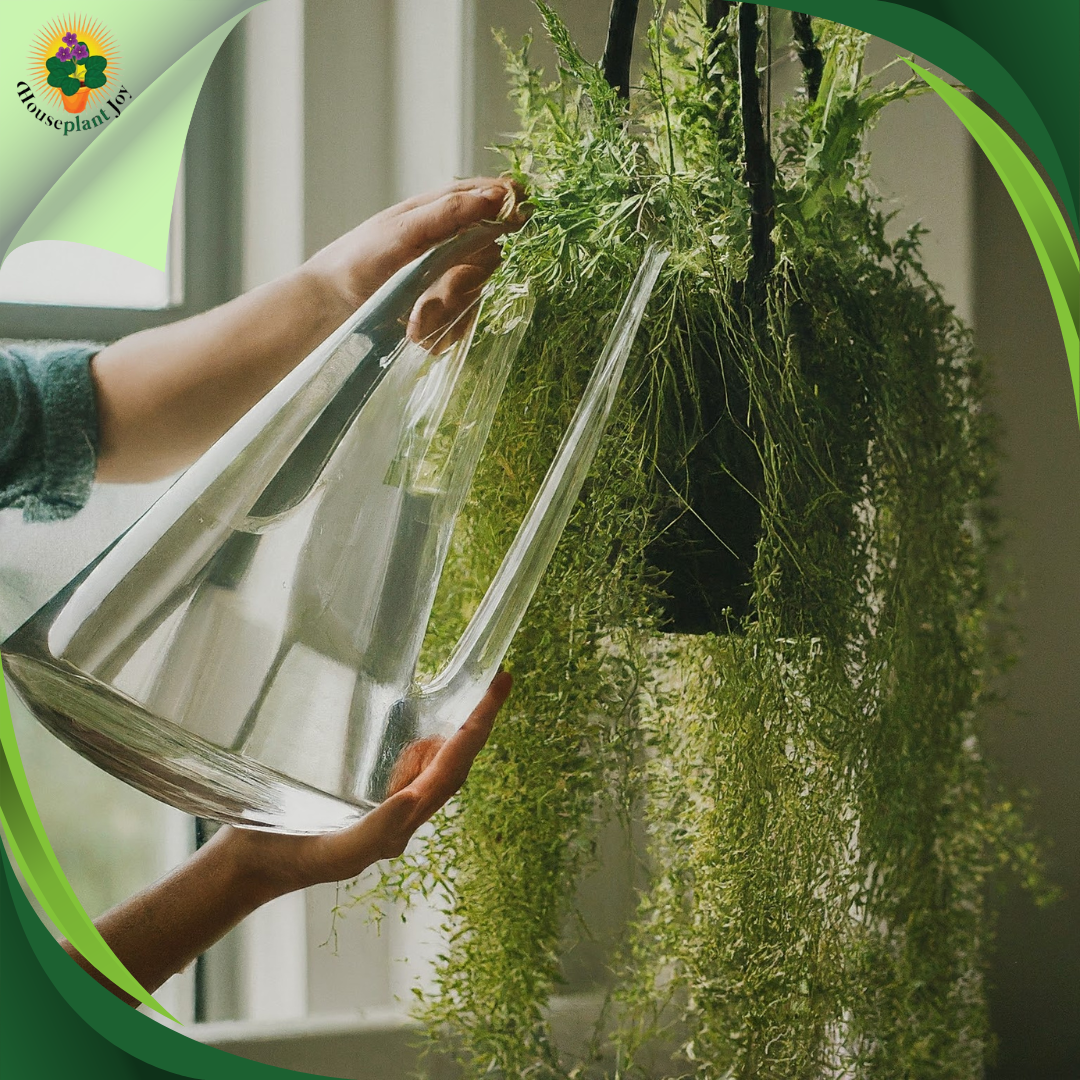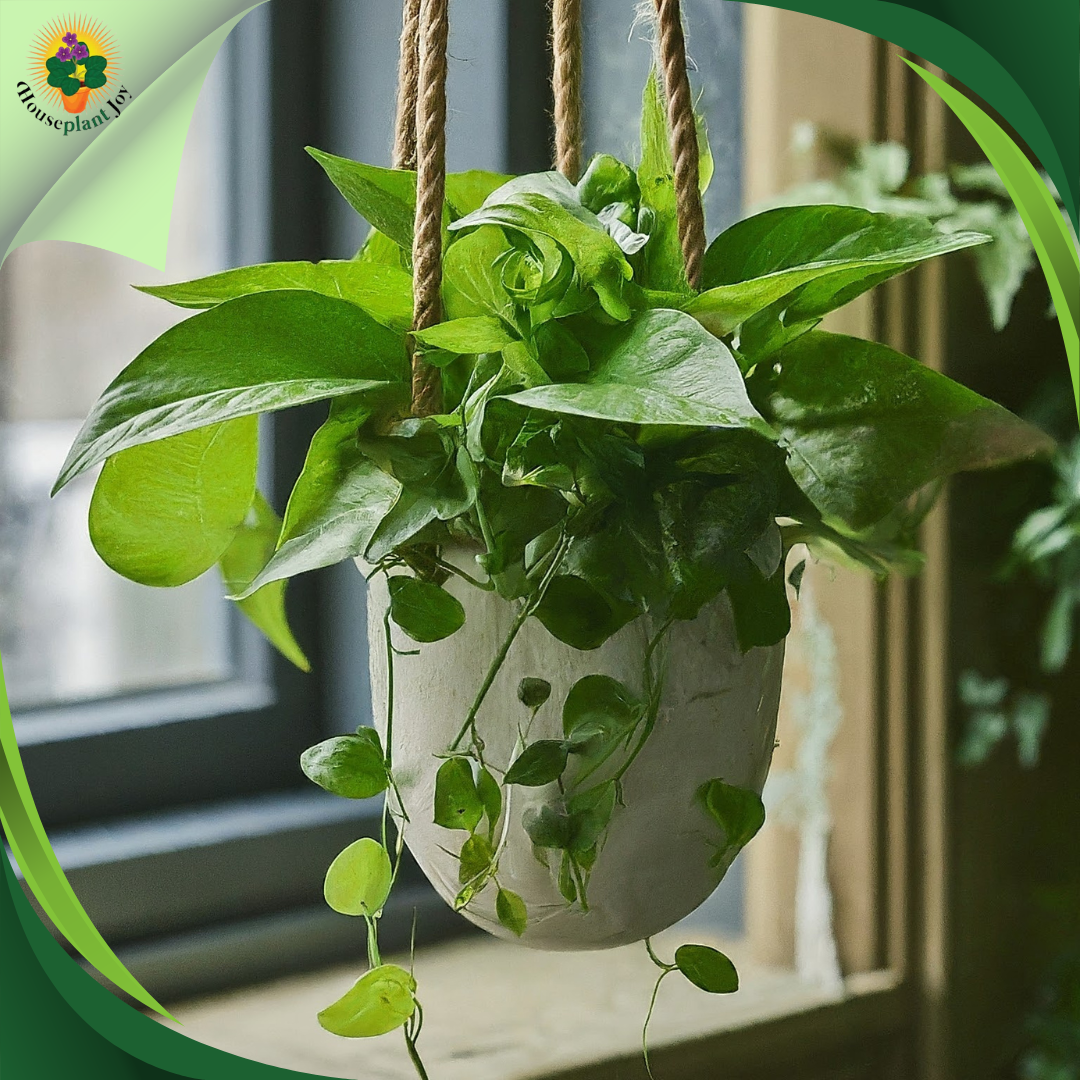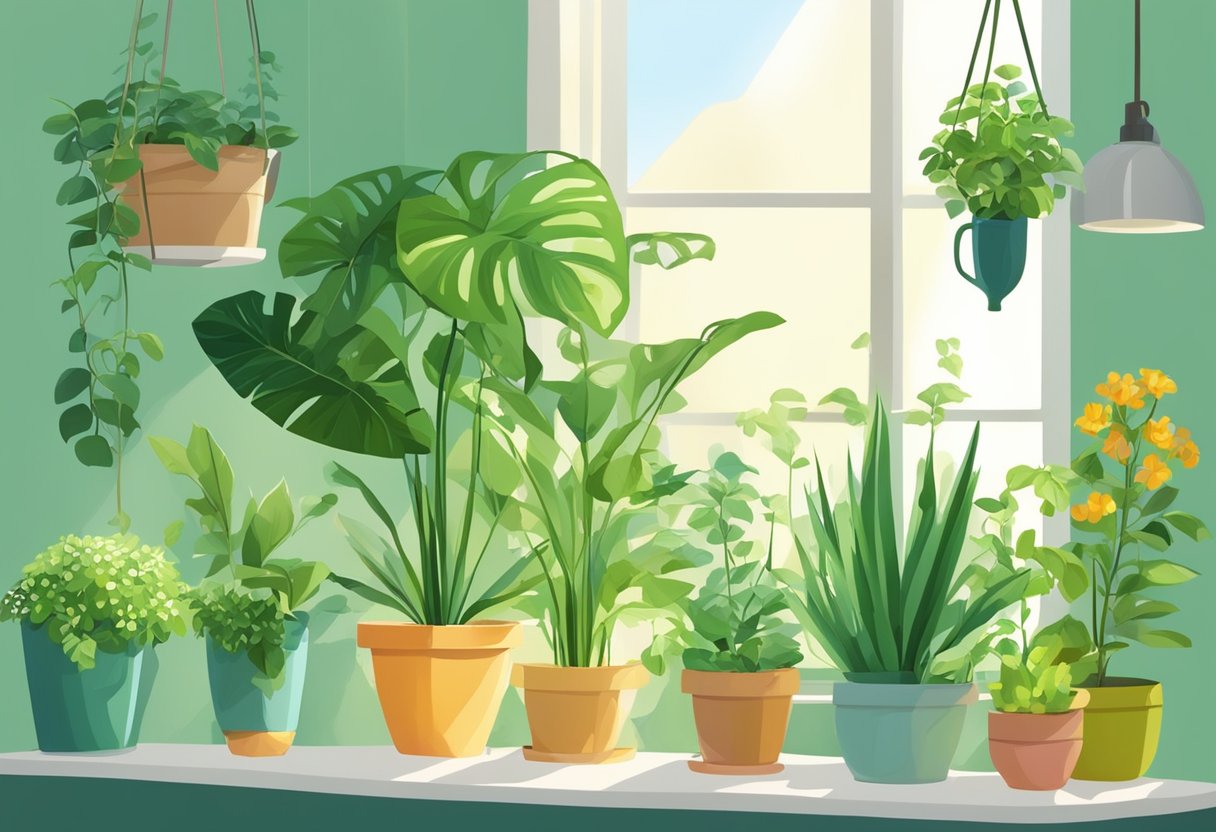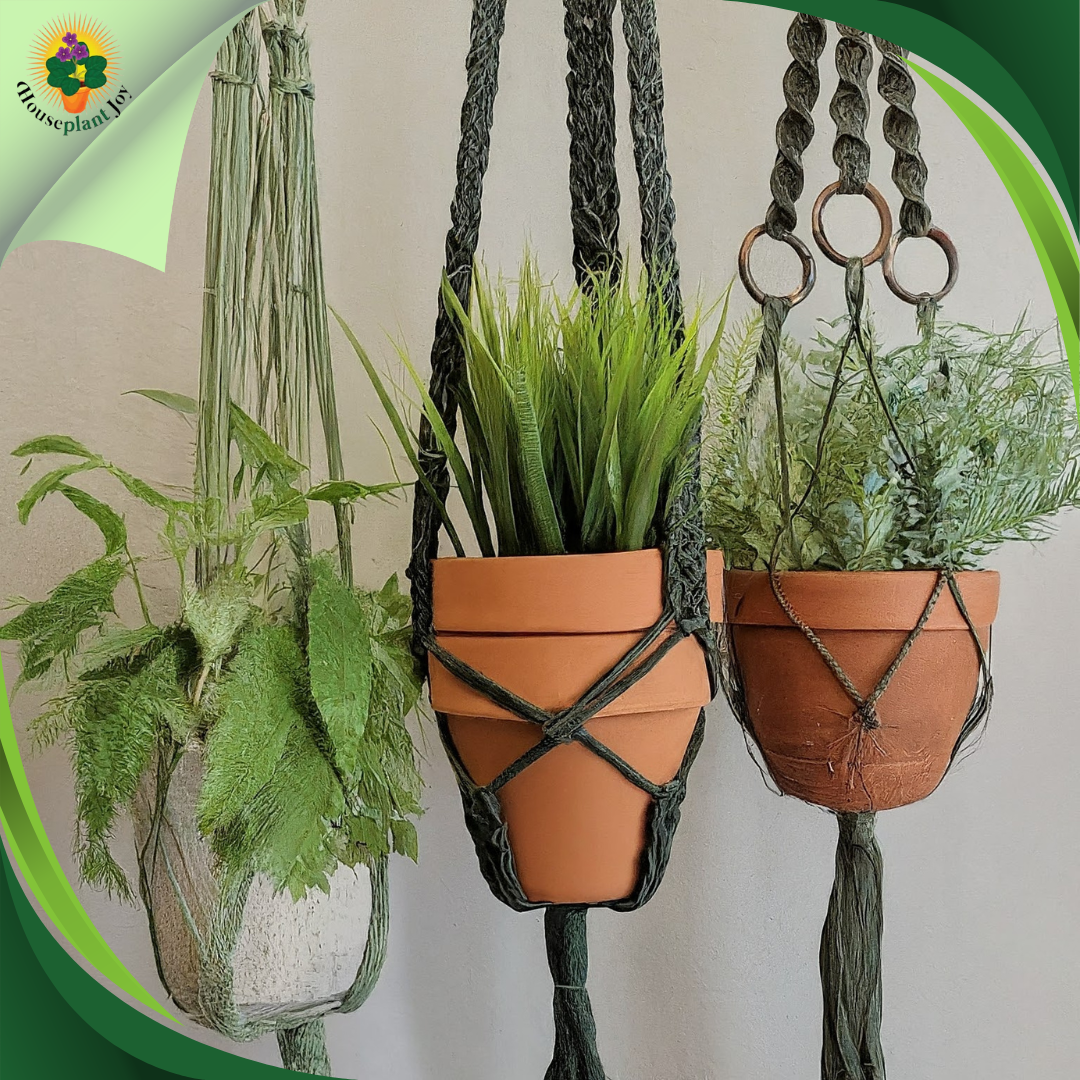HousePlantJoy is supported by our audience. When you purchase through one of our links, we may earn a small affiliate commission. As an Amazon Associate I earn from qualifying purchases. Your cost is not affected.
==================
Growing houseplants in hanging pots has always been a delightful way for me to add a touch of nature to my home. I love the way they create a sense of vertical gardening, transforming empty spaces into lush, green havens. It’s a rewarding experience to watch these plants thrive and cascade over the edges of their containers, bringing a unique charm to any room. Whether you’re a seasoned plant parent or just starting your gardening journey, there’s something special about tending to houseplants that dangle from above.
Growing Houseplants in Hanging Pots: Easy Tips for Elevated Greenery
Growing plants in hanging pots adds a unique touch to your home decor. These suspended gardens bring life to empty spaces and create a lush, green atmosphere. Hanging baskets allow you to grow a variety of plants, from trailing vines to colorful flowers, even in small living areas.
You can choose from many plant options for your hanging pots. Some popular choices include spider plants, which have long, arching leaves, and English ivy, known for its cascading vines. These plants are easy to care for and thrive in hanging environments.
When setting up your hanging garden, pick a spot with the right amount of light for your chosen plants. Most indoor hanging plants prefer bright, indirect sunlight. Don’t forget to water and fertilize regularly to keep your plants healthy and growing strong.
Light Requirements
When choosing hanging plants, look at the light in your space. Some plants need lots of sun, while others do well in shade. Bright indirect light works for many hanging plants.
Put sun-loving plants near south-facing windows. These might include pothos or string of pearls. For low light areas, try spider plants or English ivy.
Check plant tags for light needs. Move plants if they don’t seem happy. Yellow leaves can mean too much sun, while slow growth might mean not enough.
Hanging Plant Varieties
You have many options for hanging plants. Trailing plants look great in hanging pots. They spill over the sides, creating a waterfall effect.
Popular choices include:
- Pothos
- String of pearls
- Spider plants
- Boston ferns
- Burro’s tail
Mix different plants for more interest. Try pairing ferns with flowering plants like fuchsias. Or combine plants with different leaf shapes and colors.
Size and Growth Patterns
Think about how big your plants will get. Some grow fast and need more space. Others stay small and compact.
Fast-growing plants like pothos might need bigger pots or more frequent trimming. Slow growers like succulents won’t outgrow their pots as quickly.
Consider the shape of your plants too. Bushy plants like ferns fill out a pot nicely. Trailing plants like string of hearts create long, elegant vines.
Match the plant’s growth to your space. Tall ceilings can handle longer vines. For tight spots, pick compact growers like mini orchids or small ferns.
Materials and Design
Hanging pots come in many materials. Plastic pots are light and cheap. They’re good for indoor use. Clay pots look nice but are heavy. They work well outdoors.
Metal pots can be stylish. But they heat up fast in the sun. This can harm your plants’ roots.
Wooden pots add a natural look. They’re often used for orchids. Fiber pots are eco-friendly and light.
Pick a pot that fits your decor and plant needs. Make sure it has strong hangers or chains. This keeps your plants safe and secure.
Weight Considerations
Think about weight when you choose a hanging pot. A heavy pot can be hard to hang safely.
Trailing plants like ivy or petunias work well in light pots. They don’t need much soil.
Big plants need bigger pots. These can get very heavy when wet. Make sure your ceiling or hanger can hold the weight.
Use plastic or fiber pots for large plants indoors. They’re lighter than clay or ceramic.
Always check the weight limit of your hooks or brackets. Better safe than sorry!
Drainage Requirements
Good drainage is a must for hanging pots. Without it, your plants can get root rot.
Look for pots with holes in the bottom. These let extra water escape. You can add a layer of pebbles at the bottom for better drainage.
Some pots come with saucers to catch water. This is good for indoor use. It stops water from dripping on your floor.
Self-watering hanging planters can be helpful. They have a water reservoir at the bottom. This keeps soil moist without overwatering.
Remember, different plants need different amounts of water. Pick a pot that matches your plant’s needs.
Secure Mounting
Choose strong hooks or brackets to hang your plants. Pick spots that can hold the weight of the plant, pot, and wet soil. Check your ceiling or wall material before drilling. Use anchors for drywall or masonry for brick.
For lightweight plants, try over-the-door hooks or tension rods. These don’t need drilling.
Test the strength by hanging the empty pot first. Add weight slowly to make sure it’s stable.
Always leave some slack in hanging chains or ropes. This lets you adjust the height easily.
Aesthetics and Styling
Spreading plants around the room can make your space look bigger. Put them on shelves, in corners, or by windows.
Group plants with similar needs together. This creates a lush, green focal point.
Mix different pot styles and plant types for visual interest. Try combining trailing plants with upright ones.
Use macrame hangers or colorful pots to add style. These can match or contrast with your decor.
Play with height. Hang some plants low and others high to create layers.
Accessibility for Maintenance
Place plants where you can reach them easily for watering and pruning. Use pulleys or adjustable hangers to lower high plants.
Put plants that need frequent care at eye level. This makes it easy to check soil moisture and remove dead leaves.
Leave space around each plant for air flow. This helps prevent pest and disease issues.
Consider using self-watering hanging baskets for hard-to-reach spots. These need less frequent watering.
Keep a step stool or ladder handy for taller plants. But don’t hang plants so high that care becomes dangerous.
Soil Selection
When potting up your houseplants, use a well-draining potting mix. This helps prevent water from sitting around the roots. Mix in some perlite or sand to improve drainage. For most plants, a general-purpose potting soil works well.
Consider your plant’s specific needs. Succulents and cacti need extra-gritty soil. Orchids prefer bark-based mixes. Add some organic matter like compost to feed your plants.
Don’t use garden soil in pots. It’s too heavy and may contain pests or diseases. Always start with fresh, sterile potting mix when repotting.
Transplanting Techniques
To repot your plant, gently remove it from its old pot. Loosen the root ball and trim any damaged roots. Place a layer of fresh soil in the new pot.
Set your plant in the new pot at the same depth it was growing before. Fill in around the roots with fresh soil. Tap the pot to settle the soil and remove air pockets.
Water thoroughly after repotting. This helps the soil settle and gives your plant a good drink. Be gentle with your plant for a few weeks as it adjusts to its new home.
Timing and Signs to Repot
Watch for signs that your plant needs repotting:
- Roots growing out of drainage holes
- Plant drying out quickly
- Slowed growth
- Soil breaking down or compacting
Spring is often the best time to repot. This gives your plant a full growing season to settle in. Some fast-growing plants may need yearly repotting. Others can go several years between repots.
Choose a pot 1-2 inches larger in diameter than the current one. Don’t go too big – a pot that’s too large can lead to overwatering problems.
Watering Techniques
Bottom watering is a great option for hanging plants. Fill a bucket or sink with water and let the pot sit in it for 15-30 minutes. This allows the soil to soak up water from the bottom, reducing mess.
For top watering, use a watering can with a long, narrow spout. This helps you reach the soil without spilling. A turkey baster can work well for smaller plants too.
Self-watering planters are another handy solution. These have a water reservoir that slowly releases moisture to the soil. You’ll need to refill the reservoir less often than traditional pots.
Monitoring Moisture Levels
Checking soil moisture in hanging plants can be tricky. Lift the pot to feel its weight – it should feel lighter when dry. You can also use a moisture meter with a long probe to reach the soil easily.
Look for signs of under or overwatering in your plants. Drooping leaves often mean the plant needs water. Yellow leaves might signal too much water.
Set reminders on your phone to check your plants regularly. Each type of plant has different water needs, so get to know what works best for yours.
Preventing Water Damage
To avoid water damage to floors or furniture, use saucers or drip trays under your hanging pots. Empty these regularly to prevent standing water.
Consider moving plants to the sink or bathtub for watering. This contains any mess and lets you give them a good soak.
Choose plants that don’t need frequent watering for high-up spots. Succulents and plants with thick leaves often need less water and are great options for hanging baskets.
Choosing Fertilizers
When picking fertilizer for your hanging plants, go for a balanced, water-soluble option. Look for a fertilizer with equal parts nitrogen, phosphorus, and potassium. These are often labeled as 10-10-10 or 20-20-20 on the package.
For flowering plants, you might want a fertilizer with a bit more phosphorus to boost blooms. Organic options like worm castings or compost tea are great too.
Slow-release fertilizers can be handy. You add them less often, which is nice for hard-to-reach hanging pots.
Always follow the package instructions. It’s better to under-fertilize than over-fertilize, as too much can harm your plants.
Feeding Schedules
Your hanging plants need food most when they’re actively growing. This is usually spring and summer.
During these months, feed your plants every 3-4 weeks. Use a diluted liquid fertilizer when you water.
In fall and winter, most plants slow down their growth. You can cut back on fertilizing or stop altogether.
If you have winter-blooming plants, keep feeding them during their growing season.
Always water your plants before fertilizing. This helps prevent root burn.
Understanding Nutrient Requirements
Different plants have different nutrient needs. Leafy plants often need more nitrogen for lush foliage. Flowering plants may need extra phosphorus for big blooms.
Watch your plants for signs of nutrient issues. Yellow leaves might mean a lack of nitrogen. Purple-tinged leaves could signal a phosphorus shortage.
Soil pH affects nutrient uptake. Most houseplants like slightly acidic soil with a pH between 6.0 and 6.5.
If your plant’s leaves are pale or growth is slow, it might need more food. But if leaf tips are brown or crispy, you might be over-fertilizing.
Remember, plants in hanging pots may dry out faster. This can affect how often they need nutrients. Keep an eye on your plants and adjust as needed.
Trimming Techniques
To trim your hanging plants, use clean, sharp scissors or pruning shears. Cut just above a leaf node at a 45-degree angle. This helps water run off and encourages new growth. Remove any dead, yellow, or brown leaves. Trim long, straggly stems to keep the plant full and bushy.
For vining plants like pothos or philodendron, pinch off the growing tips to promote branching. Don’t be afraid to give your plant a good haircut – many houseplants bounce back quickly from a trim.
When pruning flowering plants, wait until after they’ve bloomed. Cut off spent flowers to encourage more blooms.
Promoting Healthy Growth
Regular pruning helps your plants grow fuller and healthier. Remove any crossed or rubbing branches to improve air flow. This prevents fungal issues.
Rotate your hanging baskets weekly so all sides get equal light. This prevents lopsided growth. Lowering your plants makes it easier to check soil moisture and prune effectively.
Fertilize your plants during their active growing season. Use a balanced, water-soluble fertilizer every 2-4 weeks. Reduce feeding in winter when growth slows down.
Repot your plants when they outgrow their containers. Spring is usually the best time for this. Choose a pot 1-2 inches larger in diameter.
Dealing With Pests and Diseases
Check your plants regularly for signs of pests or diseases. Look under leaves and along stems for tiny bugs or unusual spots. Common pests include spider mites, mealybugs, and scale insects.
If you spot pests, isolate the affected plant. Treat it with insecticidal soap or neem oil. For severe infestations, you might need to prune heavily and treat the plant.
To prevent fungal diseases, avoid overwatering. Make sure your pots have drainage holes. If you see moldy soil, let it dry out completely before watering again.
Remove any diseased parts of the plant immediately. Disinfect your pruning tools between cuts to avoid spreading the problem.
Adjusting Care in Winter
In winter, your hanging plants need less water and food. Cut back on watering by about half. Only water when the top inch of soil feels dry. Move plants away from cold windows and drafts. They may need more light, so consider using grow lights.
Don’t fertilize during winter months. Your plants are resting and don’t need the extra food. Mist tropical plants to boost humidity. This helps make up for dry indoor air from heating.
Prune any dead or yellowing leaves. This keeps plants looking nice and prevents disease. Check for pests more often, as they can spread quickly in winter.
Summer Care Tips
Summer means your hanging plants need more water and food. Check them daily as they dry out fast. Water deeply until it runs from the drainage holes. Feed every 2-4 weeks with a balanced liquid fertilizer.
Protect plants from harsh afternoon sun. Move them to shadier spots or use sheer curtains. Trim regularly to keep plants bushy and full. Pinch off faded flowers to encourage more blooms.
Watch for pests like spider mites that thrive in heat. Spray leaves with water to increase humidity and deter pests. Consider moving plants outside to a shaded porch for summer.
Handling Blooming and Dormancy
Some hanging plants have periods of blooming and rest. During bloom time, give plants more water and food. Deadhead spent flowers to keep them blooming longer.
When plants start to slow down, cut back on care. Many succulents and ferns have natural rest periods. Water less and stop fertilizing.
Move resting plants to a cooler, darker spot. This mimics natural conditions and helps them recharge. Don’t worry if plants drop some leaves – it’s normal. When you see new growth, slowly increase light and resume normal care.
Overwatering Symptoms
Overwatering is a big issue for hanging plants. Watch out for these signs:
- Yellow or brown leaves
- Soft, mushy stems
- Mold on the soil surface
- Drooping leaves that feel heavy
To fix this, let the soil dry out between waterings. Stick your finger in the soil. If it’s dry an inch down, it’s time to water.
Make sure your pot has good drainage. If water sits in the bottom, your plant’s roots can rot. You can add perlite or vermiculite to the soil to improve drainage.
Dealing With Inadequate Light
Light issues can make your plants struggle. Here’s what to look for:
- Leggy or stretched-out growth
- Pale or yellowing leaves
- Slow growth or no new leaves
If your plant needs more light, try these tips:
- Move it closer to a window.
- Use a grow light for extra help.
- Rotate the plant weekly for even light exposure.
Some plants need less light. If leaves are scorched or curling, your plant might be getting too much sun. Move it to a shadier spot.
Rescuing Deteriorating Plants
Don’t give up on a sad-looking plant! Try these rescue tips:
- Trim off dead or yellowing leaves.
- Check the roots. If they’re crowded, repot the plant in a bigger container.
- Adjust your watering. Most plants like to dry out a bit between waterings.
If you see bugs, wipe leaves with soapy water. For bigger infestations, use neem oil or insecticidal soap.
Boost humidity for tropical plants. Mist leaves or use a pebble tray filled with water under the pot.
Remember, plants can bounce back with the right care. Be patient and keep trying!
Growing Houseplants in Hanging Pots: A Greener Home, Elevated
Growing houseplants in hanging pots has been a rewarding journey for me, and I hope it inspires you to try it too. By following the tips and techniques discussed in this article, you can create a beautiful and thriving indoor garden. Remember, selecting the right plants, choosing suitable pots, providing proper care, and addressing common issues will ensure your hanging plants flourish.
From the joy of watching trailing vines cascade down from their containers to the satisfaction of nurturing healthy, vibrant plants, the experience of growing houseplants in hanging pots is truly enriching. So, why not embark on this green adventure and elevate your home decor with the beauty of nature?


